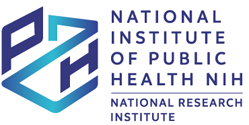For Authors
Scope of the Journal
The journal Roczniki Państwowego Zakładu Higieny - Annals of the National Institute of Hygiene is the peer-reviewed scientific journal that publishes original research articles, reviews, short communications and letters to the Editor.
The journal is devoted to research studies on food and water safety, nutrition, dietetics, environmental hygiene, toxicology and health risk assessment, public health and other areas related to health sciences.
The journal publishes in Open Access under the terms of the Creative Commons Attribution-Non Commercial License (CC BY-NC).
General rules for manuscript submission
- All manuscripts in English should be submitted to the Editorial Office exclusively online through the editorial system ( https://www.editorialsystem.com/rpzh/). Submissions by e-mail will not be accepted.
- Submitted manuscripts must be an original work, not have been previously published nor be under consideration for publication in another journal.
- Only high scientific quality articles in English complying with the scope of the journal will be considered for publication.
- The journal requires that authors provide an ORCID IDs when submitting a manuscript for publication.
- If the article is accepted for publication, the Corresponding Author will receive ‘License to Publish Statement’ document via the editorial system. The signed document should be submitted to the Editorial Office. Without the submission of the signed document, it will not be possible to publish the article in a journal.
- The Editorial Office reserves the right to make editorial corrections to the manuscript that do not influence the substantive content of the article, without prior notification to the author.
Manuscript arrangement
Manuscripts submitted for publication should be prepared in doc, docx, rtf formats using Microsoft Word Times New Roman 12 font and 1.5 space between lines on A4 format.
Manuscript should include: (1) title page, (2) text of the manuscript, (3) Tables, (4) Figures, (5) Appendices. A complete manuscript should not exceed 16 pages, including text, tables, figures and references.
Abstract should not exceed more than 300 words. The original research article should consist of the following sections: Background, Objective, Material and Methods, Results, Discussion and Conclusions. The abstract of a review article does not need to be divided into sections.
Key words. 5-7 words or short phrases according to the MeSH (Medical Subject Headings) catalogue available at www.nlm.nih.gov/mesh/meshhome.html.
Original research article should be divided into the sections: Introduction/Background, Material and Methods, Results, Discussion, Conclusions, Acknowledgements, Conflict of interest and References.
Review article should include: Introduction/Background, Conclusions, Acknowledgements, Conflict of interest and References. The remaining section titles depend on the topic of the article.
Introduction/Background should contain the scientific rationale and the aim of the study or in the case of a review the purpose of the article. Only references directly related to the paper should be cited.
Material and Methods should provide detailed information on the subject of the study, methods, reagents, apparatus and techniques used in sufficiently exhaustive way to enable readers to repeat the experiments or observations. For generally known methods references should be given together with name of the methods or statistical analysis used in the study. For new or substantially modified methods detailed descriptions are to be added. In the case of experimental studies on laboratory animals, the information should be provided on the approval by a local Ethics Commission. In the case of clinical studies in humans that they have been performed with the ethical standards according to the Helsinki Declaration.
Results should be presented in a logical sequence in the text, the same applies to the tables and figures. The data from the tables and figures should not be repeated in the text, where only the most important observations from the studies are to be summarized.
Discussion should emphasize the new and important aspects of the results and a comprehensive interpretation of the results obtained against the background of results obtained by other authors. Quotations should be restricted to those with immediate relevance to the author’s findings.
Conclusions should be stated in points or descriptively and should be logically connected with the aims stated in the introduction. Statements and conclusions not derived from own observations should be avoided. If a hypothesis is proposed it must be stated clearly.
Acknowledgements. One or more statements should specify: (1) persons who contributed substantially to the study but cannot be regarded as authors, such as technical assistants, statisticians, data collectors etc. Their assistance should be acknowledged for the sake of transparency. It must be clear that they are not responsible for the final version of the article. The consent of all the persons named in the acknowledgements must be obtained; (2) all sources of financial and material support, which should specify the nature of the support. The recommended form is: “This work was supported by …….: (name of the organization, project number etc.)”.
Conflict of interest. Information regarding conflict of interest should be disclosed. If there is no conflict, authors should declare that.
References should be presented according to the Vancouver referencing style. References should be cited in the order in which they first appear in the text. If the same publication is cited again the same number should be given. The journal title should be abbreviated in accordance with MEDLINE. Each position in the list of references should start from the new line and contain: consecutive number, author’s (authors’) surname(s) and initials of name(s), full title of the paper, official journal title abbreviation (according to the List of Journals Indexed in Index Medicus), year, volume, number, the first and the last page number. If the cited article or book has a DOI (Digital Object Identifier), it should be included in the references. The titles of the cited papers in other language than English should be translated into English. In the text of the manuscript only the number referring to the cited publication listed in references should be given in square brackets. The list of references should include only those that are cited in the text of the manuscript.
The journal Roczniki Państwowego Zakładu Higieny – Annals of the National Institute of Hygiene should be cited as: Rocz Panstw Zakl Hig.
The examples of reference style are given below:
Journal article with 1-6 authors:
1. Mertens E, Colizzi C, Peñalvo JL. Ultra-processed food consumption in adults across Europe. Eur J Nutr. 2022;61(3):1521-1539. doi: 10.1007/s00394-021-02733-7.
Journal article with more than 6 authors:
2. Osei-Kwasi HA, Boateng D, Danquah I, Holdsworth M, Mejean C, Terragni L, et al. Acculturation and Food Intake Among Ghanaian Migrants in Europe: Findings From the RODAM Study. J Nutr Educ Behav. 2020;52(2):114-125. doi: 10.1016/j.jneb.2019.09.004.
Book:
3. Kerner S, Chou C, Warmind M. Commensality: From Everyday Food to Feast. London: Bloomsbury Publishing PLC; 2015. ISBN 9780857857361.
Book chapter:
4. Lucas BL, Feucht SA. Nutrition in childhood. In: Mahan LK, Escott-Stump S, editors. Krause’s Food & Nutrition Therapy. 12th ed. St. Louis, MO: Saunders Elsevier; 2008. p. 222–245. ISBN 9780808923787.
Internet source:
5. World Health Organization. GHE: Life expectancy and healthy life expectancy [Internet]. Geneva: World Health Organization; 2024. [cited 2024 Jan 19] Available from: Available from: https://www.who.int/data/gho/data/themes/mortality-and-global-health-estimates/ghe-life-expectancy-and-healthy-life-expectancy.
Legislative acts:
6. Regulation (EC) No 1333/2008 of the European Parliament and of the Council of 16 December 2008 on food additives (Text with EEA relevance). OJ L 354, 31.12.2008, p. 16–33. Available from: http://data.europa.eu/eli/reg/2008/1333/oj.
Tables should be prepared in separate file(s) in doc, docx, rtf, odt formats and numbered using Arabic numerals. The title should be place directly above each table. Tables should always be cited in the text in consecutive numerical order. Each column in tables should have a brief heading, more extensive explanation should be given below the table, if necessary. The number of tables should be limited to the necessary minimum.
Figures and photographs should be prepared in separate file(s) in jpg, gif, tif, png, docx formats and numbered in Arabic numerals according to the sequence of their appearance in the text. The titles should be placed below the figures. Photographs must be of high quality.
Tables, figures or photographs should be cited in the text in consecutive numerical order: (Table 1), (Figure 1), (Photo 1).
Abbreviations, symbols, units. Generally known and used abbreviations may be left unexplained, others must be explained at the first use in the text. Metric SI units are recommended, however also other generally used units are accepted.
Peer-review process
- Roczniki Państwowego Zakładu Higieny – Annals of the National Institute of Hygiene uses the double blind peer-review model in the process of reviewing manuscripts. It means that authors and reviewers remain anonymous and don't know each other’s identities.
- The manuscripts submitted for publication undergo in the Editorial Office the initial evaluation in terms of compliance of the subject matter with the profile and formal requirements of the journal.
- The manuscripts that do not meet the journal's requirements are not qualified for the further publishing process, and the authors are informed. Manuscripts that meets these requirements and receives a positive initial evaluation is directed for peer-review evaluation to at least two independent reviewers, experts in the field of the subject matter of the manuscript.
- The reviewers must ensure independence of evaluation and no conflict of interest. They should be affiliated in different institution than the authors.
- The review form is available to reviewers after logging into the Editorial System.
- The review is in writing form and contains the reviewers’ final conclusions as to whether the article should be published in its current form, after minor corrections, after major changes, or not it should be published.
- The Editor-in-Chief, on the basis of the reviews received, decides whether the manuscript will be accepted for publication, sent back to the corresponding author for correction, or rejected. The author receives a written review and information on the status of the submitted manuscript and its qualification for publication.
- The author should respond to all comments and remarks made by reviewers and submit a corrected version of the manuscript. This version of manuscript is re-checked before the Editor-in-Chief makes the final decision on acceptance it for publication.
Most read
We process personal data collected when visiting the website. The function of obtaining information about users and their behavior is carried out by voluntarily entered information in forms and saving cookies in end devices. Data, including cookies, are used to provide services, improve the user experience and to analyze the traffic in accordance with the Privacy policy. Data are also collected and processed by Google Analytics tool (more).
You can change cookies settings in your browser. Restricted use of cookies in the browser configuration may affect some functionalities of the website.
You can change cookies settings in your browser. Restricted use of cookies in the browser configuration may affect some functionalities of the website.


